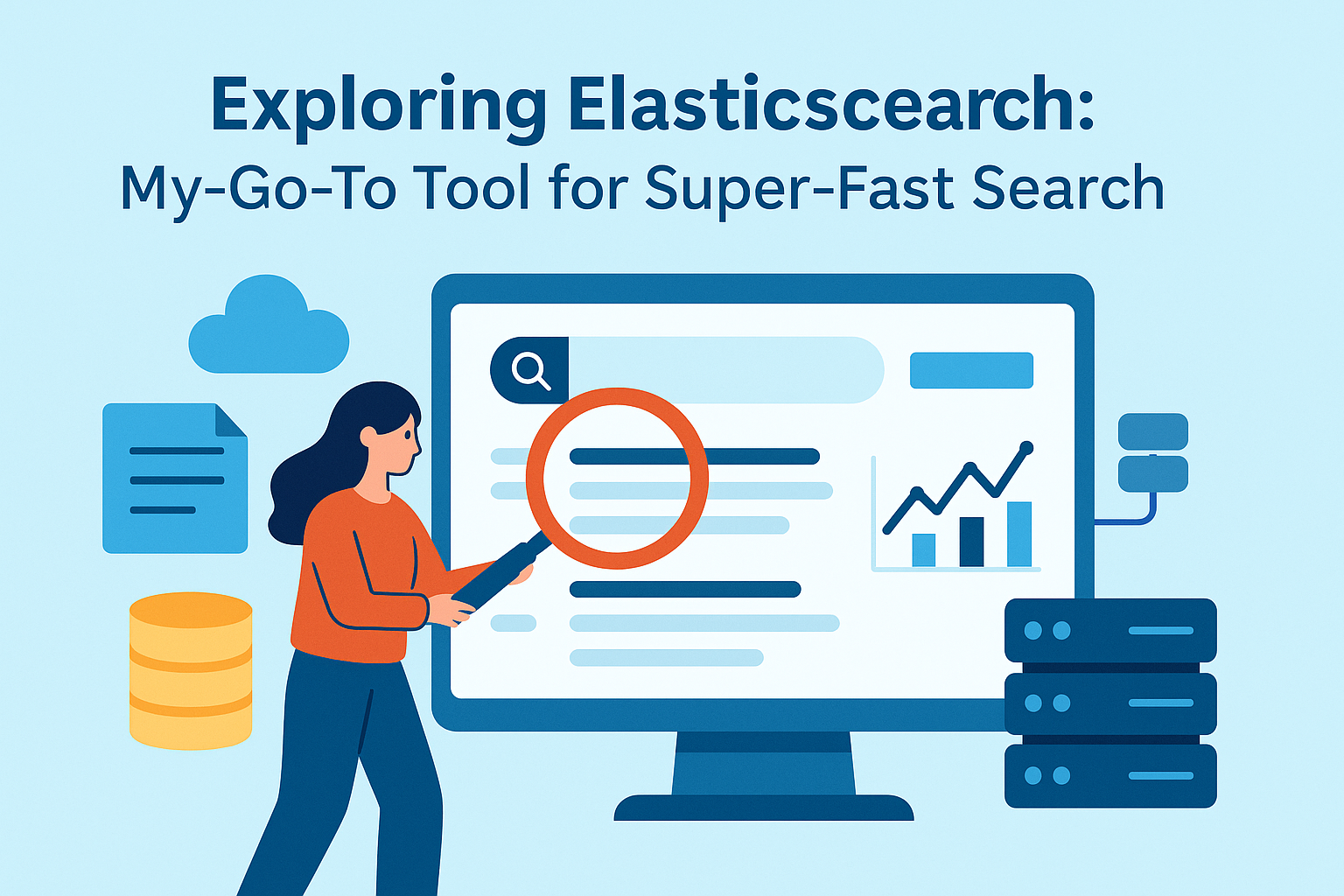Exploring Elasticsearch: My Go-To Tool for Super-Fast Search
I first started working with Elasticsearch while trying to figure out a way to quickly search through logs. It’s kind of like having a supercharged search engine for all your data, and it’s been a lifesaver more than once! Whether I’m dealing with logs, product searches, or even real-time monitoring, Elasticsearch has always been up to the task.
1. What Is Elasticsearch?
In a nutshell, Elasticsearch is this open-source search engine that’s crazy fast. It’s built on Apache Lucene, and it’s designed for big data. I use it to search through massive amounts of logs and documents, and it hasn’t failed me yet. Plus, it’s super scalable, which means no matter how much data I throw at it, it keeps performing.
2. How Does Elasticsearch Work?
Here’s how I like to think about Elasticsearch: it’s like a librarian who knows exactly where everything is stored. It organizes data into indices (kind of like bookshelves), and when you ask it to find something, it’ll do it in a flash.
- Documents: Individual pieces of data like logs, product info, or posts.
- Index: Where similar documents are grouped (like a library section).
- Shard: A split of your data to allow scaling.
- Cluster: A group of nodes working together efficiently.
3. Core Features
- Full-Text Search: Fuzzy matching and fast retrieval.
- Real-Time Analytics: Visualize instantly with Kibana.
- Scalability: Add nodes without breaking things.
- Speed: Queries on millions of docs return in milliseconds.
4. Elasticsearch in Action
Here’s an e-commerce example where Elasticsearch helped users search thousands of products with blazing speed:
GET /products/_search
{
"query": {
"match": { "product_name": "laptop" }
}
}It supports complex queries, fuzzy searches, and aggregations effortlessly.
5. Setting Up Elasticsearch
- Download Elasticsearch from the official site.
- Start it with:
./bin/elasticsearch3. Visit http://localhost:9200 to confirm it’s running.
6. When Should You Use Elasticsearch?
- Log & Event Data: Great for analyzing server logs.
- E-commerce Search: Enables lightning-fast product searches.
- Real-Time Monitoring: Works great with Kibana for live dashboards.
7. Integrating with Kibana
If Elasticsearch is the engine, Kibana is the dashboard. It helps build interactive graphs, charts, and visualizations with ease.
